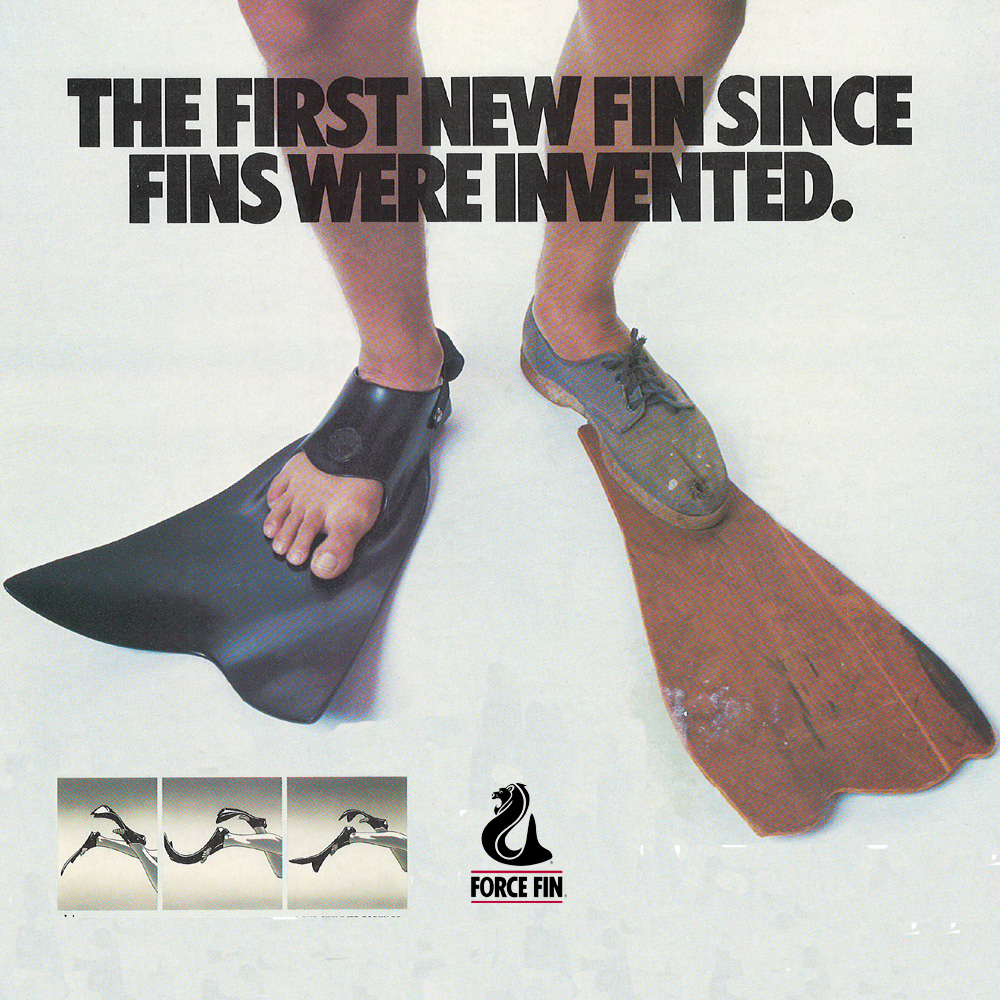The first fins were a lot like the one on the right – a shoe with a stiff board bolted on. Most fins still are flat. Other, more flexible fins still retain the old paddle shape. Most split fins are simply double paddles.
Then there is Force Fin in a league of its own.
If you try to raise a board flat out of the water, you know how hard it is to lift. Other, flat fins require the same effort to up-kick when you are swimming. After awhile your foot gets tired and cramps set in.
The Force Fin folds in on the up-kick to reduce water resistance, and SNAPS open for full power on the down-stroke. All the while moving more water behind, propelling you forward, better than with flat fins. Kicking Force Fins gives the impression that nothing is attached to your foot at all. That’s because the water flows backwards, rather than up and down. You don’t have to work hard to make the flexible, yet Snappy Force Fin move you.
Since there are no thick ribs on the side of the fin, the blade easily moves in whatever direction you choose. It doesn’t veer at an awkward angle, as other fins do.
Other fins have a stiff foot pocket, that squeezes your toes and causes your arches to cramp. Force Fins do not cause cramping because the fin is flexible and toes are free of the foot pocket, so they can bend naturally and wiggle about, without restriction.
Force fins are made of high quality polyurethane instead of rubber. Strong adjustable nylon heal straps or flexible bungie cord, hold fins comfortably in the foot pocket.
Kicking Force Fins you’ll be able to stay in the water and enjoy it longer. Which is a bit like re-inventing swimming.

